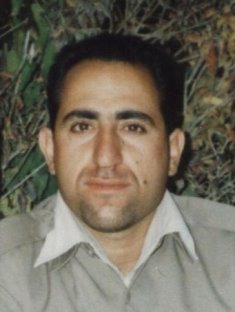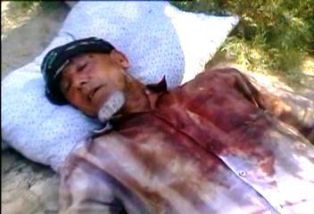Iranian Minorities’ Human Rights Organisation (IMHRO)
Ref.IMHRO.57
Iranian government have increased the number of minefields in South West, Mid West and South East Iran, as well as expanding the minefields which are already there. Minefields in these areas are some of the largest minefields in the Middle-East and include one of the largest minefields in the world, which has more than 20 million mines. The minefields have been left following 8 years war between Iran and Iraq[i].
The Iranian Government have not yet signed the Ottawa Treaty, which includes the following declaration: “Convention on the Prohibition of the Use, Stockpiling, Production and Transfer of Anti-Personnel Mines and on their Destruction”[ii]. 158 countries have signed the Ottawa Treaty so far.
According to sources inside Iran, the government are planning further minefields despite their misleading propaganda which talks about decreasing the number of minefields.
Almost every week somebody becomes the victim of a mine; mainly women and children. Many archaeological sites belonging to minorities have been damaged by minefields, as Government try to wipe out their ancient background. There is also a policy inhibiting the return of indigenous farmers to these areas. The demography of the area is behind Iran’s policy to increase minefields.
IMHRO is very concerned regarding the expansion of minefields in Iran. The problem is not only mines; it is also Explosive Remnants of War (ERW) and in particular, Unexploded Ordnance (UXO), left behind following war and military maneuvers made by the Iranian army. Many children playing in these areas are at risk of being injured by unexploded ordinance.
Between September 2008 and April 2009 at least 250 people have become victims of minefields, most of them women and children. Local media are banned from reporting mine-related casualties.
Ahwaz
New minefields have added to the large number of minefields already present following 8 wars between Iran and Iraq. The government has only cleared up the minefields in areas surrounding new oil fields that are being developed.
Policy of no return of farmers to their land in Ahwaz area is blamed for not acting to clear up of minefields. (I’m not sure about the policy so don’t know how to re-word this bit)
Azerbaijan
New minefields are being developed alongside the border with the Republic of Azerbaijan. Minefields increased in new oil development.
Baluchistan
Number of minefields has increased in the areas of Narmshir and Pir Sooran. The Government have been using drug smugglers and armed rebels as an excuse for expanding the minefields. Government also continue to block the news of mine-related casualties from Baluchistan.
Kurdistan
In the Mid and North West there are new minefields. Many villages have suffered casualties and the Government deliberately do not clear up minefields in Kurdish areas. Ghasreh Shirin, Mehran, Dehloran, Sumar, Dashteh Zahab, Azgaleh, Nousood, Baneh, Sardasht, Asbeh Shiler and Mariwan cities are among the areas most highly affected by minefields.
Turkmen Sahara
Many people living in rural areas are affected by and become casualties of minefields. Minefields have increased around farms and ports.
Export of mines
Not only has the Iranian Government not stopped the increase of minefields inside Iran but they’ve also increased the illegal export of mines to Afghanistan and Iraq. They have supplied mines to terrorist groups in Afghanistan[iii] and Iraq. The export of mines to African countries has also been reported.
Background
One of the big issues for minorities in Iran who live alongside the border is being surrounded by huge minefields. Despite more than 20 years having passed since the end of the last war, the Iranian government continues to delay clearing minefields and instead have increased minefields, using security as an excuse for not taking action.
Iran is a producer of mines. It has been recently reported that landmines made in Iran were found in Afghanistan[iv]. Afghanistan is one of the biggest victims of minefields in the world.
In November 2006 the UN group monitoring the arms embargo on Somalia reported shipments of arms including landmines from Iran to combatants in Somalia in violation of the arms embargo on the country. The November report states that on 25 July 2006 an aircraft carrying arms, including an unknown quantity of mines, from Iran landed at Baldogle airport and was met by senior members of the Courts Union and the Dayniile Islamic Court. The type of mine, antipersonnel or anti vehicle was not specified.[v]
Action
Please write an appeal to UN Mine action bodies and ask them to call on Iran to clear their minefields of mines and UXO. Ask that they halt the increase and expansion of minefields. We urge you also to write to the Iranian government to show your support for Minorities, voice your concerns and ask for mine clearance in Minority areas.
Please send your appeal to:
United Nations Mine Action Service (UNMAS)
Two United Nations Plaza,
6th Floor,
New York, NY 10017,
USA
United Nation Development Programme (UNDP)
Mine Action TeamOne United Nations Plaza,
20th Floor, New York,
NY 10017,
USA
United Nations Office for Disarmament Affairs (UNODA)
United Nations,
Room S-3170,
New York, NY 10017,
USA
Supreme leader of Iran
Sayyed Ali Khamenei
E-mail via web site
http://www.leader.ir/
United Nations High Commissioner for Human Rights
Ms. Navanethem (Navi) Pillay
Office of the High Commissioner for Human Rights,
Palais des Nations,
CH-1211 Geneva 10,
Switzerland
Chairwoman of European parliament Human Rights committee
Mrs Hélène FLAUTRE
Bureau d'Hélène Flautre au Parlement européen,
8G130, rue WierzB-1049,
Bruxelles, Belgique
[i] http://archive.newsmax.com/archives/articles/2007/3/3/171446.shtml
[ii] http://www.icbl.org/treaty/text/english
[iii] http://news.bbc.co.uk/1/hi/world/south_asia/7623496.stm
[iv] http://www.rferl.org/featuresarticle/2008/01/d4846c20-8760-4d23-a2a9-fd23d07a0df3.html
[v] Report of the Monitoring Group on Somalia pursuant to Security Council resolution 1676 (2006),” S/2006/913, 22 November 2006 p. 62
Subscribe to:
Post Comments (Atom)



























































No comments:
Post a Comment